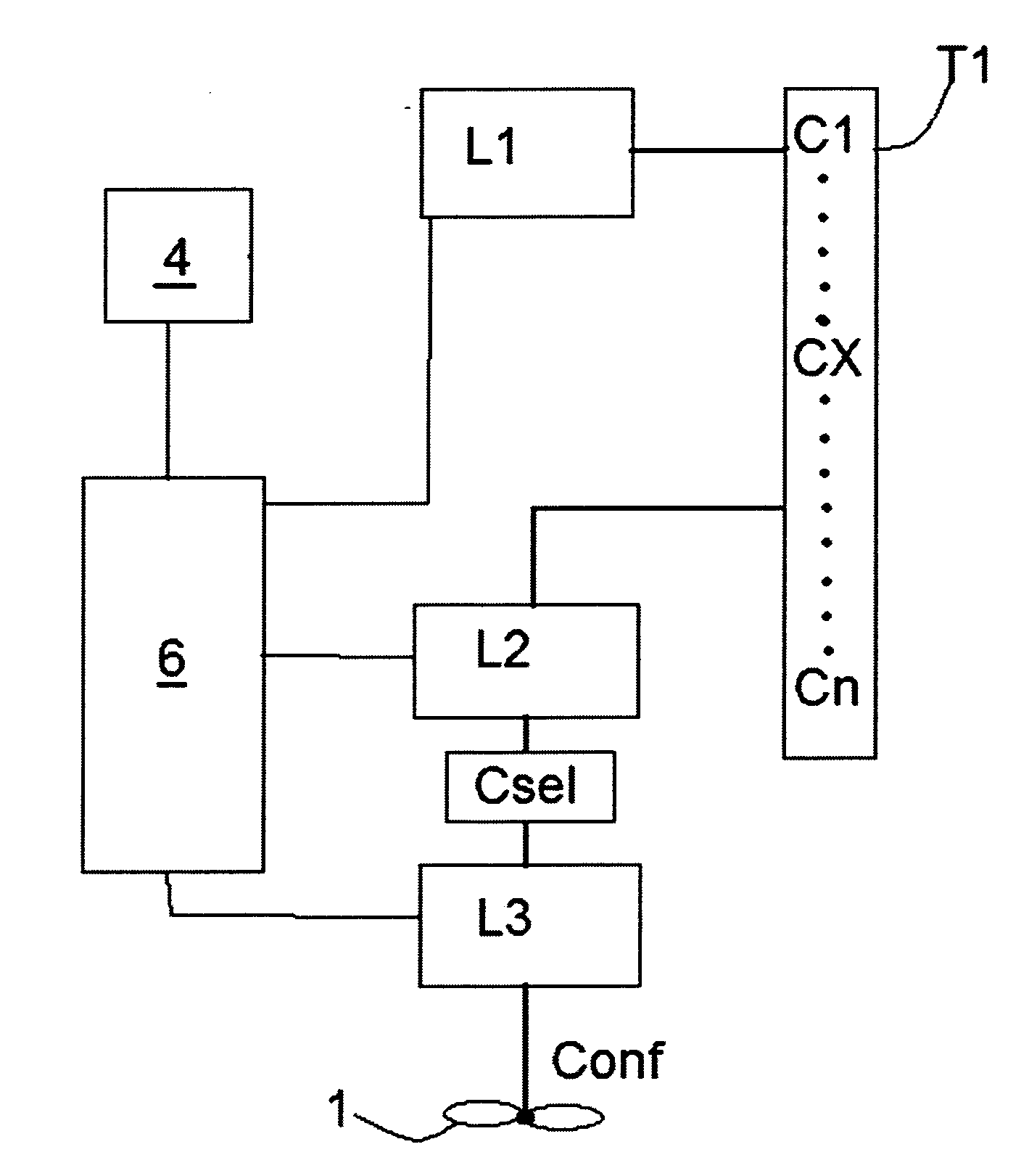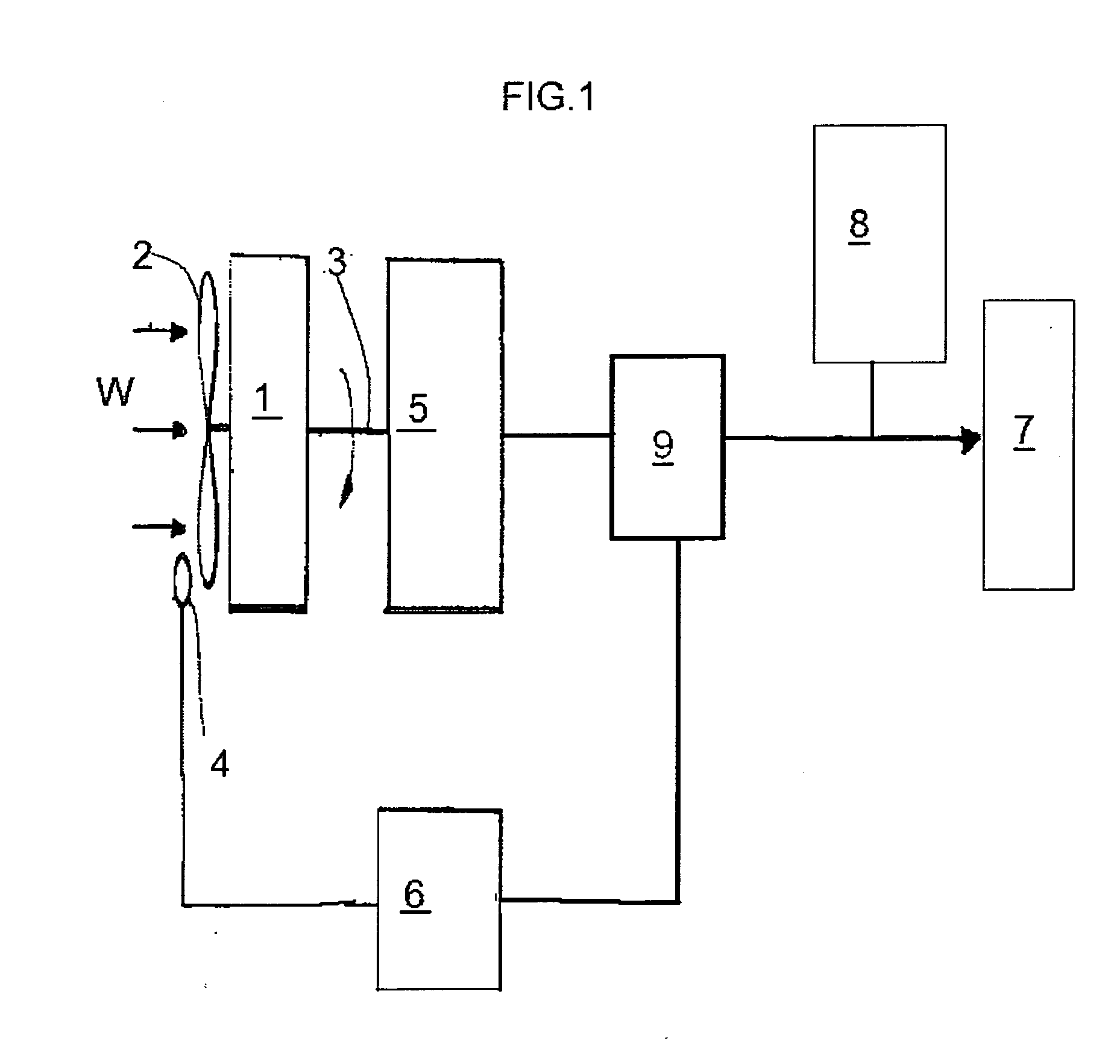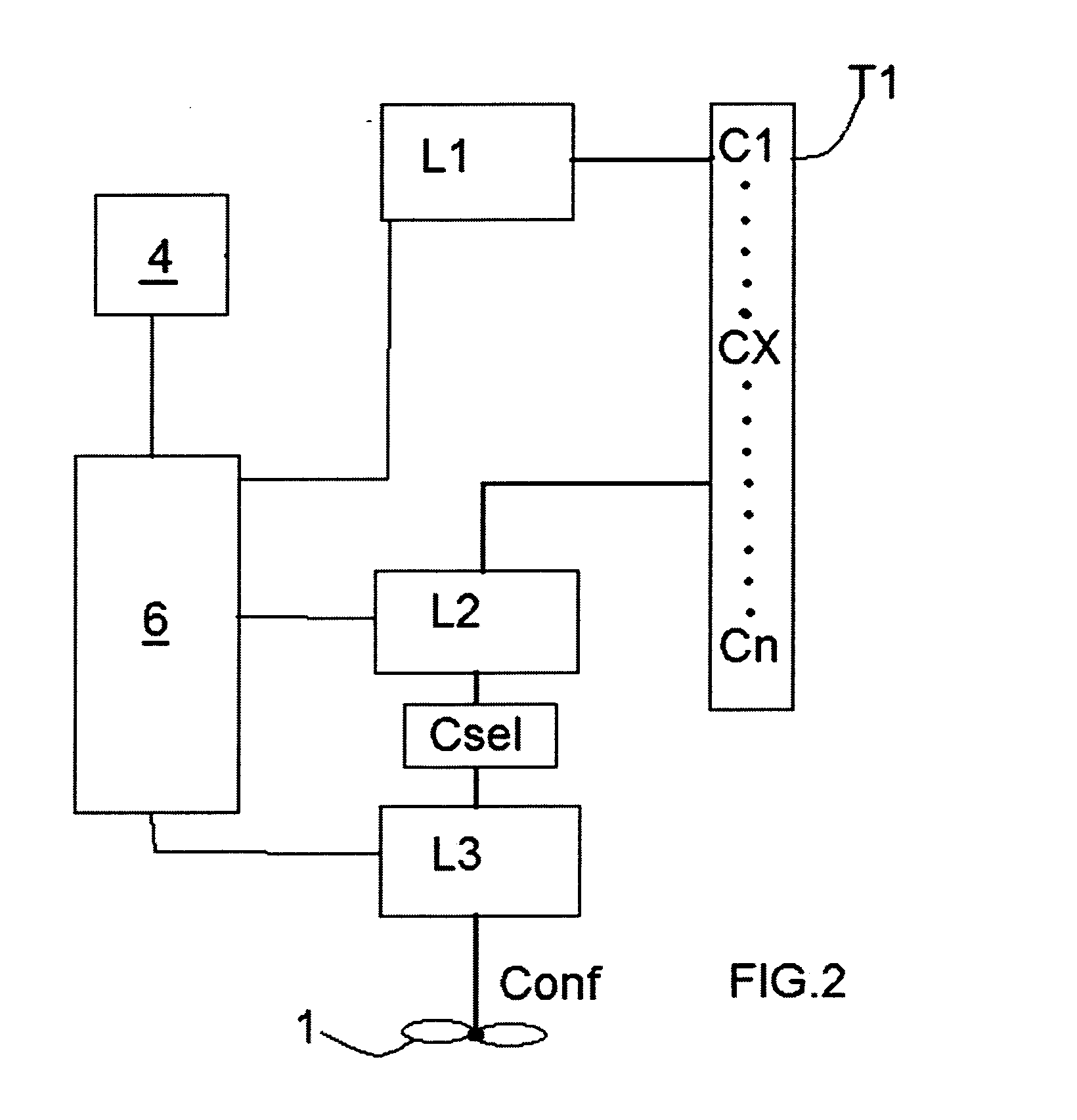Method for controlling aerogenerators for producing electrical energy
- Summary
- Abstract
- Description
- Claims
- Application Information
AI Technical Summary
Benefits of technology
Problems solved by technology
Method used
Image
Examples
Embodiment Construction
[0024]Described with reference to the accompanying drawings is a method for controlling an aerogenerator 1 for producing electrical energy comprising aerodynamic elements 2 which can rotate about a common vertical or horizontal axis shaft 3 for transmitting a mechanical torque to an alternator unit 5 when the elements 2 are struck by a wind flow W, and consequently generating electrical energy which will be used, through an inverter 9, to power a use point 7 and / or a battery unit 8.
[0025]The alternator 5 is also controlled by a control unit 6 capable of varying the electrical load applied to the alternator and also driving the alternator as a motor, that is, converting the energy accumulated in the battery 8 (or in capacitors set up for the purpose) into a mechanical torque transmitted to the elements 2 through the shaft 3.
[0026]The electrical circuit for the conversion, transmission and accumulation of the energy produced does not per se form the subject-matter of this invention an...
PUM
 Login to View More
Login to View More Abstract
Description
Claims
Application Information
 Login to View More
Login to View More - R&D
- Intellectual Property
- Life Sciences
- Materials
- Tech Scout
- Unparalleled Data Quality
- Higher Quality Content
- 60% Fewer Hallucinations
Browse by: Latest US Patents, China's latest patents, Technical Efficacy Thesaurus, Application Domain, Technology Topic, Popular Technical Reports.
© 2025 PatSnap. All rights reserved.Legal|Privacy policy|Modern Slavery Act Transparency Statement|Sitemap|About US| Contact US: help@patsnap.com



